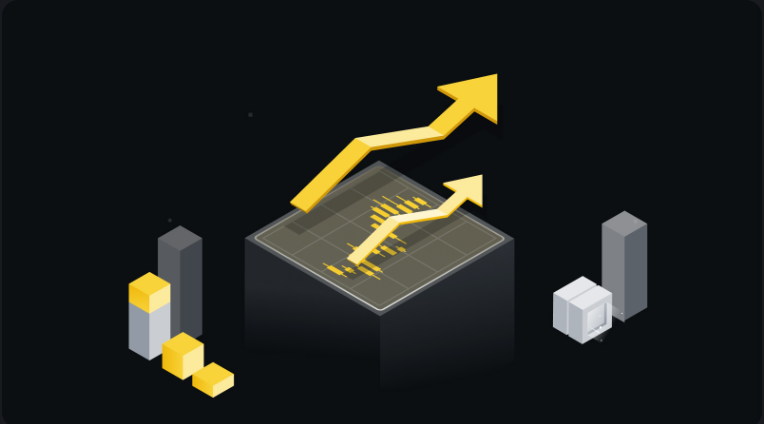
Summary
Hash rate is a key metric in cryptocurrency mining, referring to the speed at which a computer can perform hash computations.
An increase in hash rate improves a miner's chances of successfully mining a transaction block and earning the block reward.
Hash rate is typically measured in hashes per second (H/s), using prefixes such as mega, giga, or tera.
Since Bitcoin's inception, its hash rate has experienced significant growth, reaching an astonishing 470,000,000 Th/s in November 2023.
Introduction to Hash Rate and How It Works
In the realm of cryptocurrencies, the term "hash rate" holds significant importance as a key metric for evaluating the operational efficiency and security of a blockchain. Essentially, hash rate refers to the speed at which a computer performs hash computations during the process of verifying transactions (i.e., cryptocurrency mining).
These computations involve a series of attempts to find valid solutions to complex mathematical problems. The calculations are performed by specialized cryptocurrency mining machines, which submit data through algorithms known as "hash functions."
Understanding Hash Rate and Cryptocurrency Mining
In the context of Bitcoin and other cryptocurrencies, hash rate serves as a performance indicator for dedicated mining machines, representing the speed at which mining hardware processes data to compute valid block hashes. The goal of cryptocurrency miners is to generate a hash value that meets specific criteria, often starting with a certain number of zeros.
Thus, the profitability of a miner or mining pool is directly tied to hash rate. A higher hash rate increases the likelihood of successfully mining a block, thereby improving the miner's chances of earning the coveted block reward. This correlation highlights the fundamental role hash rate plays in the economics of cryptocurrency mining.
In Bitcoin mining, whenever a miner successfully verifies a new transaction block, they are rewarded with a certain amount of Bitcoin (along with transaction fees paid by users). Currently, the block reward for Bitcoin miners is 6.25 BTC, but after the 2024 Bitcoin halving, the reward will be reduced to 3.125 BTC.
Measuring Hash Rate and Its Scale
In practice, hash rate is measured in hashes per second (H/s), often using prefixes such as mega, giga, or tera. For example, a network computing one trillion hashes per second has a hash rate of 1 Th/s. This measurement scale provides a comprehensive understanding of the scale of mining operations and the corresponding computational power involved.
The Evolution of Bitcoin's Hash Rate
The history of Bitcoin's hash rate growth is a clear testament to the advancement of mining technology. Since its inception, the hash rate of the Bitcoin network has experienced remarkable growth, driven by the development of specialized mining hardware known as "Application-Specific Integrated Circuit (ASIC) miners."
Although early Bitcoin adopters could mine Bitcoin using ordinary computers, the hash rate grew rapidly, rendering personal computers and graphics cards obsolete for Bitcoin mining and necessitating a shift to more powerful and efficient mining equipment.
Key milestones in the development of Bitcoin's hash rate highlight the enormous scale of the network's computational power. The hash rate surpassed:
1 Th/s in 2011;
1,000 Th/s in 2013;
1,000,000 Th/s in 2016;
10,000,000 Th/s in 2017;
60,000,000 Th/s in 2019;
100,000,000 Th/s in 2020;
400,000,000 Th/s in 2023.
As of November 2023, the Bitcoin network's hash rate stands at approximately 460,000,000 Th/s, demonstrating the vast computational resources dedicated to maintaining the network's security and efficiency.
Hash Rate in the Cryptocurrency Ecosystem
Understanding hash rate is crucial for grasping the underlying mechanisms and security implications of cryptocurrency networks, especially those using the Proof-of-Work (PoW) protocol. The dynamic relationship between hash rate, mining difficulty, and network security underscores the intricate interplay between computational power and the resilience of blockchain ecosystems.
Conclusion
In summary, hash rate is a fundamental pillar of cryptocurrency mining architecture, reflecting the speed and efficiency at which mining hardware operates within the network. Hash rate plays a critical role in ensuring network security and the competitiveness of mining activities, further emphasizing its importance as a core metric in the cryptocurrency space.
The continuous growth and evolution of hash rate not only reflect technological advancements in mining hardware but also highlight the robustness of the corresponding blockchain networks. As the cryptocurrency landscape continues to evolve, understanding and monitoring hash rate is not only essential for miners but also holds significant value for investors, traders, and enthusiasts alike.
















